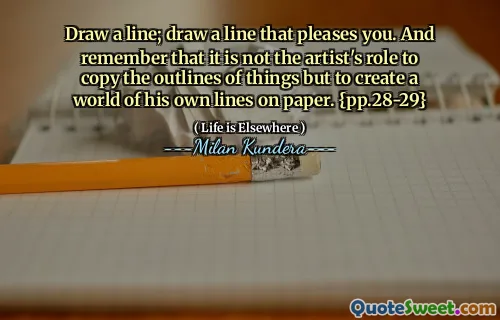In "Life is Elsewhere," the narrative follows the story of the protagonist, a young poet named Jaromil, who is desperately trying to find his identity and purpose. Set against a backdrop of political upheaval, the novel explores themes of art, ideology, and the contradictions of life. Jaromil is torn between his artistic ambitions and the expectations of society, leading him on a tumultuous path of self-discovery.
The author, Milan Kundera, uses irony and humor to critique the nature of creativity and the influence of external forces on artistic expression. Jaromil’s journey reflects the absurdity of striving for greatness in a world that often misunderstands or misrepresents true artistry. Through his encounters, Kundera highlights the struggles that come with the pursuit of personal freedom and the often-complex relationship between an artist and their society.
Ultimately, "Life is Elsewhere" serves as a philosophical exploration of what it means to be an artist and a human in a world marked by superficiality and conformity. Kundera invites readers to reflect on the challenges of maintaining authenticity while navigating societal pressures, making the novel a profound commentary on the nature of existence and creativity.
More »
Today Birthdays
1969 -
Sarah Vowell
1966 -
Chris Abani
1988 -
Hayley Williams
1906 -
Oscar Levant
1901 -
Marlene Dietrich
1571 -
Johannes Kepler
1555 -
Johann Arndt
1965 -
Salman Khan
1822 -
Louis Pasteur
1930 -
Meg Greenfield
1966 -
Bill Goldberg
1942 -
Thomas Menino
1986 -
Shelly-Ann Fraser-Pryce
1956 -
Karen Hughes
1960 -
Jeff Fortenberry
1974 -
Masi Oka
1952 -
David Knopfler
1948 -
Gerard Depardieu
1955 -
Barbara Olson
1727 -
Arthur Murphy
